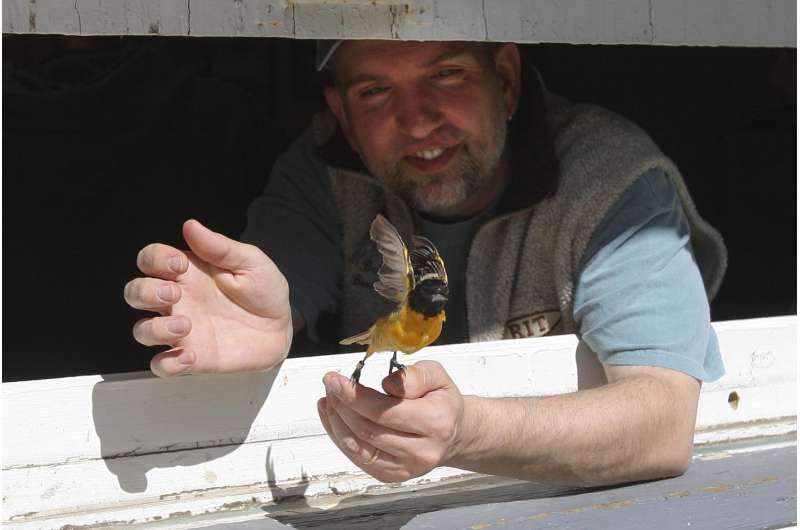Uncovering the purpose of birds' extra fat

Ornithologists have long wondered why some birds carry more fat than they need to fuel their migration, and a new study in The Auk: Ornithological Advances provides the answer: Leftover fuel from spring migration gives female birds a reproductive boost when they reach their breeding grounds.
Birds fatten up before migration to ensure they'll have the energy they need for their long trek, but why have extra? Competing hypotheses have proposed that excess fuel carried on spring migration could go toward their reproductive effort and boost nesting success, or it could be insurance against arriving on their breeding grounds early when food is scarce. Jennalee Holzschuh of SUNY College at Brockport and Mark Deutschlander of Hobart and William Smith Colleges tested these possibilities by analyzing data from a bird banding station on the south shore of Lake Ontario. Their results support the idea that extra fat helps support reproduction—females arrived with more fat reserves than males, earlier birds arrived with less fat than later birds (rather than the other way around), and all birds carried more fat in spring than in fall.
The study drew on fourteen years of data from twelve different warbler species banded at the Braddock Bay Bird Observatory, and the patterns were remarkably consistent across species. "I think this paper really illustrates the types of questions and analyses that can be addressed with archived banding data," says Deutschlander. "There are lots of data being collected at bird observatories, and much of it is waiting for interested researchers and students to use that data to address questions about bird migration."
"Whereas the avian annual cycle may be synchronized to segregate the major energy-demanding functions of molt, migration and reproduction, we recognize that events during any one phase of the annual cycle have repercussions across the entire annual cycle," adds Frank Moore of the University of Southern Mississippi, the ornithologist who first outlined the two hypotheses. "Holzschuh and Deutschlander study migratory songbirds with a discerning eye toward understanding how energetic condition during passage might carry-over to impact breeding biology. As the authors point out, individuals that arrive on the breeding grounds with surplus fat stores are likely to experience enhanced reproductive performance, regardless of sex."
More information: "Do migratory warblers carry excess fuel reserves during migration for insurance or for breeding purposes?" will be available June 1, 2016, at www.aoucospubs.org/doi/full/10.1642/AUK-15-141.1
Provided by Central Ornithology Publication Office


















